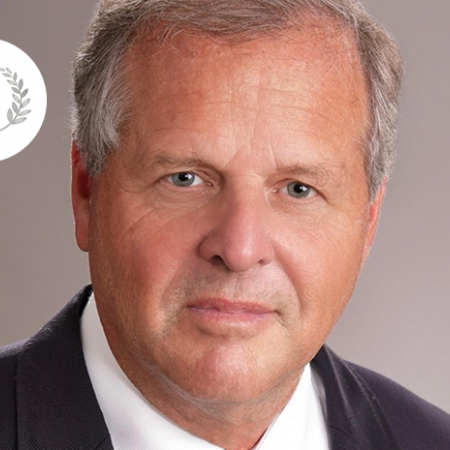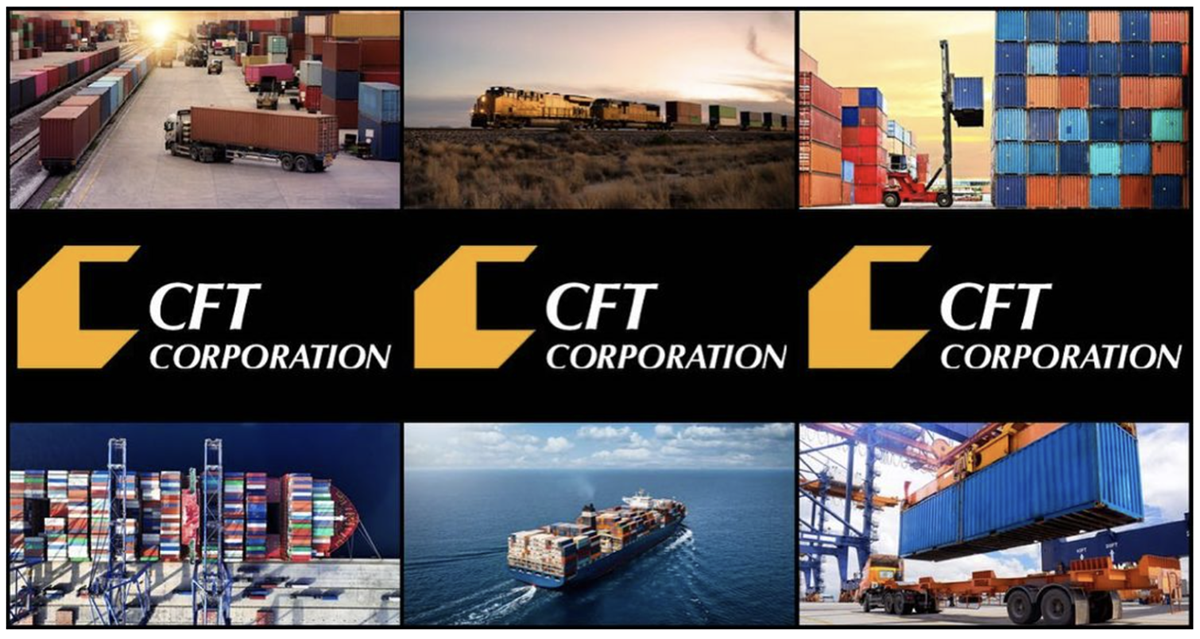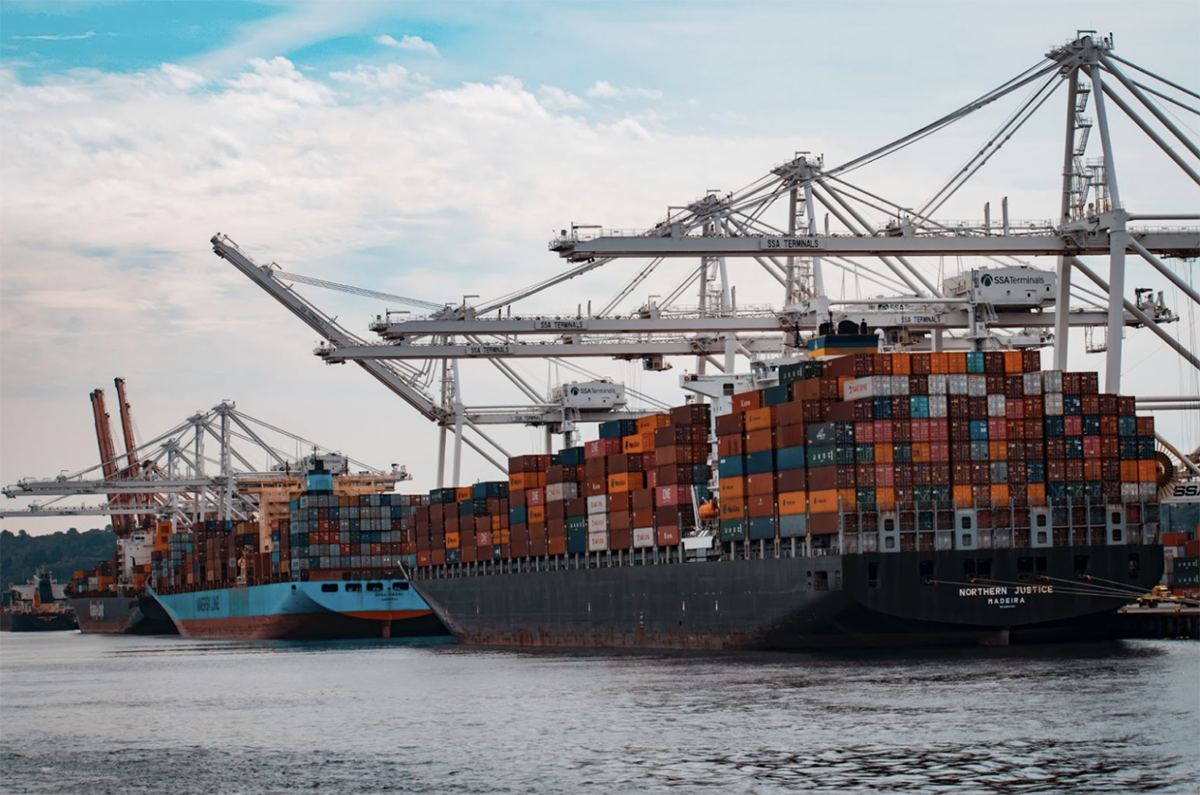May 18, 2023
Steven shares his insights with Luke Wilkinson about the spot market mentality, the value of using technology to predict the future, and his concerns about an end to US dollar dominance.


Steven Pocklington is the President of Canadian logistics giant CFT Corporation, which has been exporting North American pulses for 35 years, shipping around 50,000 containers worldwide every year.
CFT is a sponsor at the GPC’s Pulses 23 convention. Not registered yet? Sign up today!
I started in shipping when I was at university in Montréal in the late 1970s. I managed to get a summer job working on the bulk carriers that carried corn and iron ore across the Great Lakes – which gave me a feel for shipping, or domestic shipping, at least. After university I joined a company in logistics and from then on once you are in it you can't get out!
After a while I thought there was no sense working for someone else, so I'd just do my own thing. Then In 1987, I started the company. Originally we were called Commodity Freight Trade, but it was a bit of a tongue twister, so over time it became CFT Corporation. We started downtown Toronto and have always stayed in the area – now we're located in Oakville.
The shipping industry continuously comes at you with change – it brings constant change and constant variables that present challenges. It keeps you on your toes! For me it’s interesting to resolve the problems that come up and insulate our customers from risk. It's always fun to resolve those issues while finding ways to get things done.

In the late 1970s, exporting pulses was in its infancy – that was when they really started to move product from West Canada and transload in containers through Montréal. I was there when we started shipping lentils, canary seed and other specialty grains that we’re still shipping today. From that point on we also started to export Ontario and Michigan beans in containers through the Port of Montréal.
We then started expanding our reach on the Canadian and US side, developing routings via Vancouver and through the States. The originations of the beans including specialty grains started originating further into the US Midwest to include Minnesota, the Dakotas, Colorado, and Nebraska – always making it our job to find the best possible routing through different ports, whether through the US Gulf, Vancouver, or Montreal. As the industry grew we also expanded our reach and shipping options.
In terms of the volume of containers, it is around 50,000 containers per year – predominantly 20-footers. I'm not sure what percent that is of all the pulses exported from North America, but it's a reasonable chunk, and the variety of clients we have give CFT a good handle on the wellbeing of the Canadian and American pulse industries.
The varieties we move the most volume of in containers are lentils, peas, beans, then other specialty grain varieties, in that order. Peas are the biggest export, but the volume started to far exceed the capability of containers for shipping, so a good portion of it has moved over to the bulk conventional market.
Everything started when the pandemic hit in the spring of 2020, at which point everything was doom and gloom for the carriers. Then the consumer reacted – overreacted, actually – by buying everything they could to tide them over. This meant there was heavy demand to buy pulses and to receive it as fast as possible, which led to the big surge which the carriers welcomed as they just came out of a downturn themselves. When they realized demand far exceeded supply, that gave an opportunity to start raising prices – managing and limiting their space to capitalize on that demand.
It reached the point that carriers figured out it would be more lucrative to carry retail goods from Asia to North America at a high price and then ship the empty containers back as soon as possible as opposed to loading it with something like pulses and shipping it back. This made it more difficult to secure space and equipment while shipping costs went up.
So, what did we at CFT do? Well, our sole focus was to have a full staff in our office – socially distanced, of course – which meant that we could properly communicate with our clients. Our clients were mostly working from home, as were the carriers and service staff, all of which caused a real disconnect in the market. Our focus was to keep the logistics chain well-connected, interacting with our clients so as to protect them to the best of our ability while ensuring they got the space and equipment they needed to export.

The shipping lines are supply and demand operators – when demand is high and supply doesn't meet that, they're going to raise their prices. That continued from summer/fall of 2020 right through to fall of 2022. Then, the consumer woke up and realized there was huge inflation and recessionary problems, and said: "let's close our wallets". That created a severe drop in consumer goods coming into North America which left the shipping lines with lots of space – now freight rates are plummeting to a point where they're getting closer to where they were pre-COVID.
We expect that our export rate should be pretty much in line with where they were pre-pandemic by this summer/fall. Have we seen the back of the post-pandemic shipping problems? I'd say yes, the end is very near – unless some new negative geopolitical event takes place.
“Have we seen the back of the post-pandemic shipping problems? I'd say yes, the end is very near.”
It has had a dampening effect on consumer buying, for sure, but something I'm watching very carefully is countries that are thinking about moving away from the US dollar – I'm waiting to see the extent to which that is happening. For example, Brazil, Saudi Arabia, are starting to look at other currencies as opposed to just the US dollar, and if one day the ocean carriers say they'll accept Chinese Yuan or other currencies instead, then we’ve got to keep an eye on that. It's looming, but we're not there yet.
The pandemic had everything to do with the way the industry is shifted to spot pricing. The shipowners realized they can control the pricing and offer spot rates, doing away with the long-term commitments which were far riskier for them. But as the market rates soften, contract commitments will start to come back, mainly because they need the cargo much more than they did before in order to fill their ships.
Out of North America I think North to South American trade has managed quite well. It has to do with supply, because if India hadn’t had their own crops or been somewhat self-sufficient, there would have been a surge to India. Latin America and the Caribbean has been pretty steady, partly because during the pandemic people had to learn to buy from their closest supplier rather than buy from the other side of the world.
Europe has been steady and so has North Africa. Southeast Asia has also come into it. I think overall it's been a fairly decent year and that the Canadians especially can be quite satisfied with what they've been able to sell overseas.
You can just look at the airline industry and see how they improved over the years. Travel agencies and airlines got onto the same page and interconnected to become more efficient. That may not always improve their services, but their efficiency has improved and the same thing is happening with the shipping lines right now. Whether that's through accounting programs or the CargoWise system that we use to connect us with all the carriers, it all greatly improves the communication between parties and stops things from falling through the cracks.
It also means you can look back at what has happened as well as look at what's happening now, and that's going to feed into AI being able to predict what's going to happen so you can be prepared ahead of time. If an event comes, they'll say: "We know the impact this is going to have, so this is how to get our ducks in a row so it isn't going to hurt our business.”
“As the industry develops and grows, we will continue to grow with it including bringing in a new generation of players.”
I've always taken the approach that you are only as good as your expertise. We’re a niche player in the logistics industry and we're focused on exporting pulses and specialty grains out of North America – that's really our niche and we pride ourselves on doing it properly and well. Doing it well is what attracts our clients to CFT who are trying to export specialty pulses and grains.
As the industry develops and grows, we will continue to grow with it including bringing in a new generation of players. Just because you can get bigger that doesn't necessarily mean you would get better – we will only grow with our customers, and not outgrow them because when you do that you lose touch with what's really needed from them. At some point maybe we could replicate what we do coming out of Australia, South America, or even Ukraine and Russia, since we have a model that works and we do our best at it.
Disclaimer: The opinions or views expressed in this publication are those of the authors or quoted persons. They do not purport to reflect the opinions or views of the Global Pulse Confederation or its members.